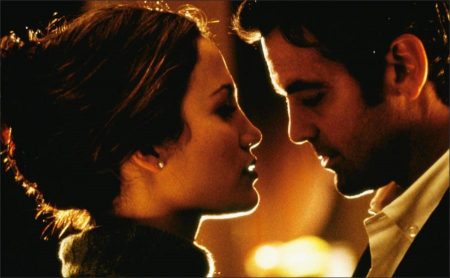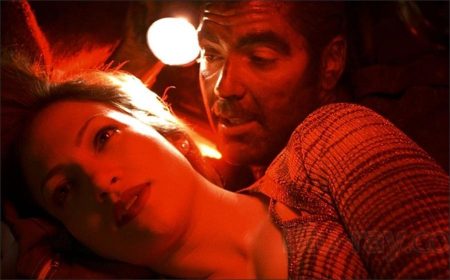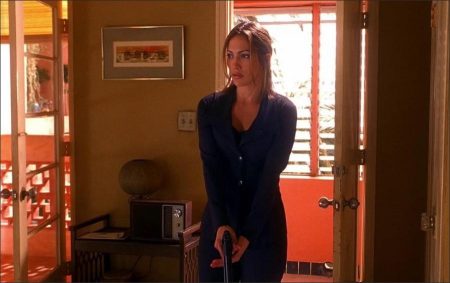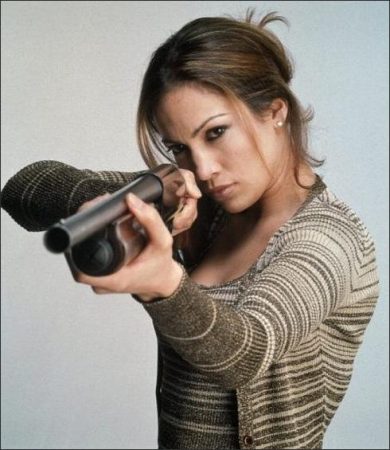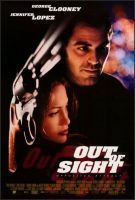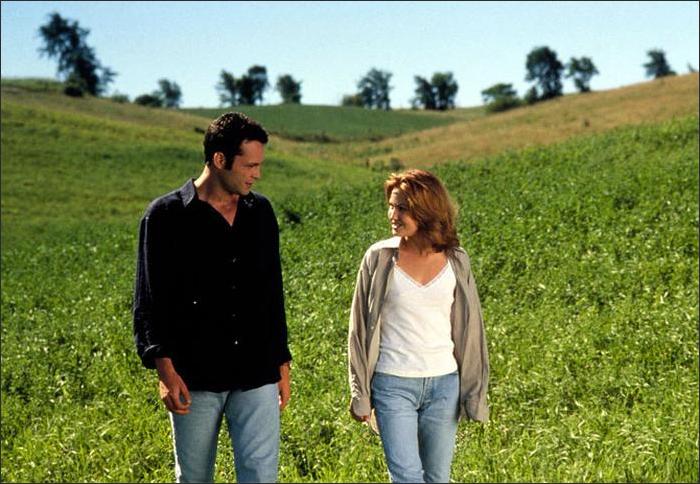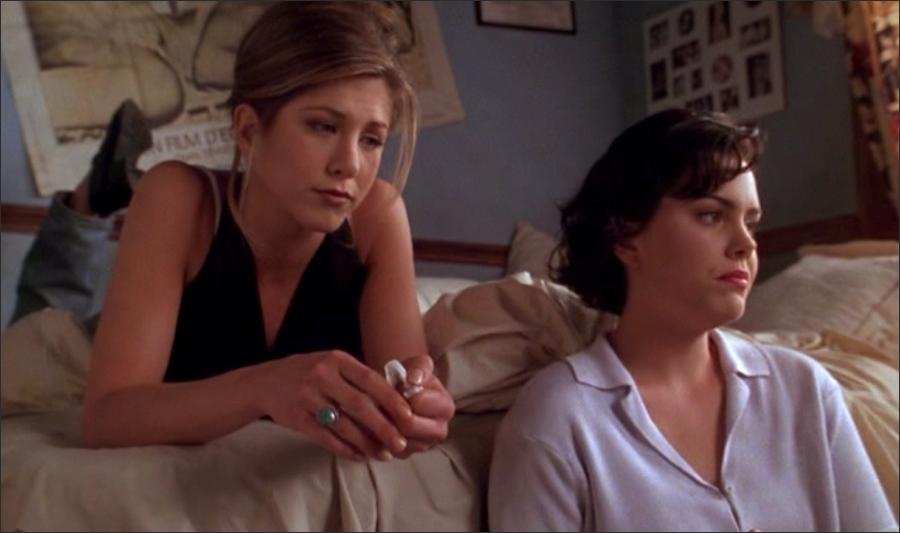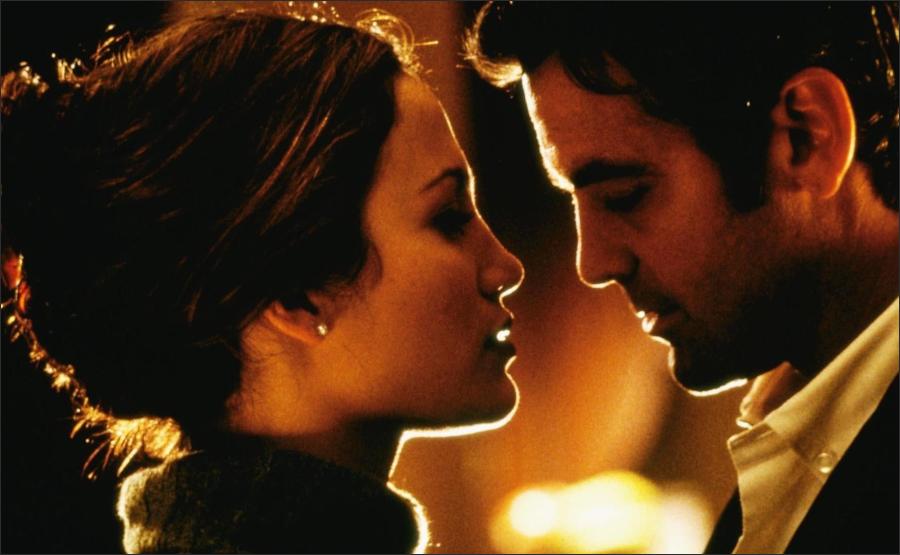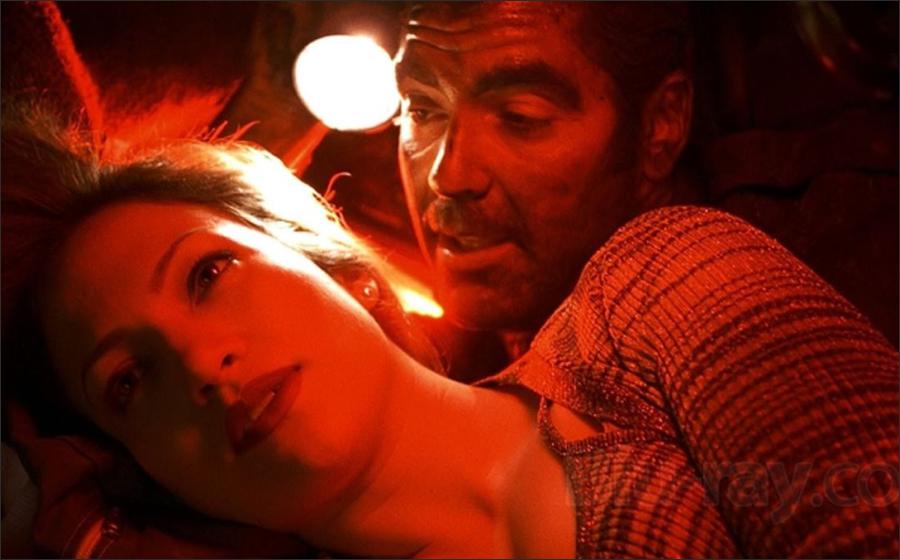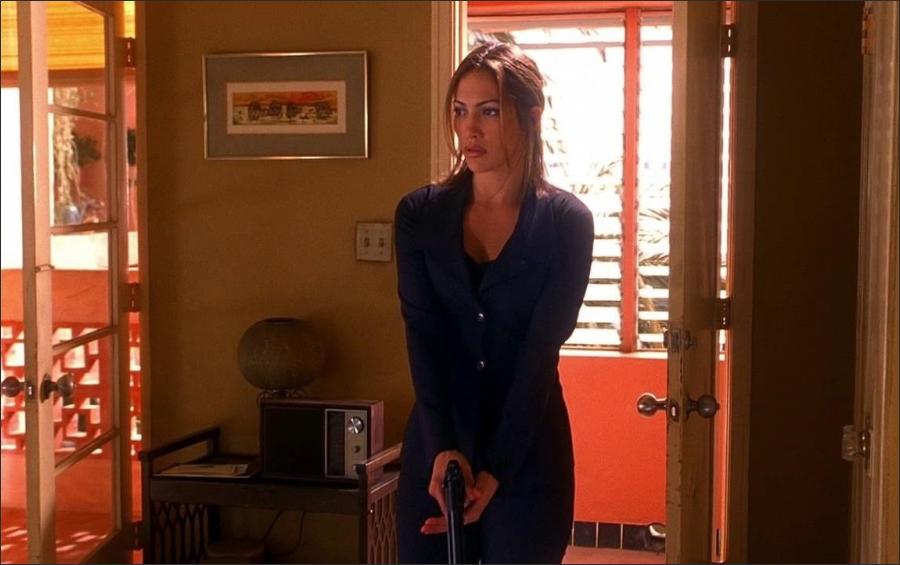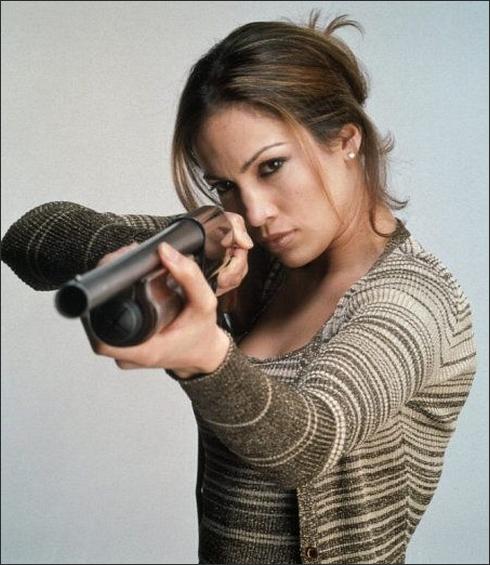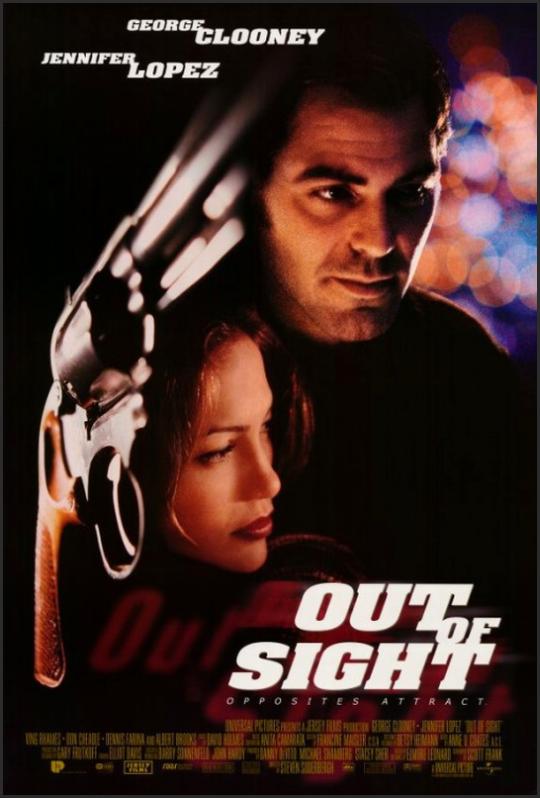Steven Soderbergh’s Out of Sight is a crime movie less interested in crime than in how people talk, flirt, lie and get themselves into trouble. Based on an Elmore Leonard novel, it relishes Leonard’s deep comic ease; the characters mosey through scenes existing primarily to savor the dialogue.
The story involves a bank robber named Foley (George Clooney)and a federal marshal named Sisco (Jennifer Lopez) who grow attracted to each other while they’re locked in a car trunk. Life goes on, and in the nature of things, it’s her job to arrest him. But several things might happen first.
This is the fourth recent adaptation of a Leonard novel, after “GetShorty,” “Touch” and “Jackie Brown,” and the most faithful to Leonard’s style.What all four movies demonstrate is how useful crime is as a setting for humancomedy. For example: All caper movies begin with a self-contained introductorycaper that has nothing at all to do with the rest of the plot.
A cop willdisarm a hostage, or a terrorist will plant a preliminary bomb. “Out of Sight”begins with the most laid-back bank robbery you’d want to see, as Clooneysaunters up to a teller’s window and politely asks, “This your first time beingheld up?” How he cons the teller is one of the movie’s first pleasures. Thepoint of the scene is behavior, not robbery.
It turns out that this robbery is not, in fact,self-contained–it leads out of and into something–and it’s not even reallythe first scene. “Out of Sight” has a time line as complex as “Pulp Fiction,”although at first we don’t realize that. The movie’s constructed likehypertext, so that, in a way, we can start watching at any point. It’s like theold days when you walked into the middle of a film and sat there until somebody said, “This is where we came in.”
Elmore Leonard is above all the creator ofcolorful characters. Here we get the charming, intelligent Foley, who isconstitutionally incapable of doing anything but robbing banks, and Sisco, themarshal, who had a previous liaison with a bank robber (admittedly, sheeventually shot him). They are surrounded by a rich gallery of othercharacters, and this movie, like “Jackie Brown,” takes the time to give everycharacter at least one well-written scene showing them as peculiar and unique.
Among Foley’s criminal accomplices are his partner Buddy Bragg(Ving Rhames, who played Marcellus Wallace in “Pulp Fiction”). He’s waiting onthe outside after the prison break. In prison, Foley met a small-time hoodnamed Glenn (Steve Zahn), who “has a vacant lot for a head.” They’re highlymotivated by one of their fellow prisoners, a former Wall Street leverageexpert named Ripley, who unwisely spoke of a fortune in uncut diamonds that hekeeps in his house. (Ripley is played by Albert Brooks with a Michael Milkenhairstyle that is not a coincidence.)
Then there’s the threesome who join Foleyand his friends in a raid on Ripley’s house. Snoopy Miller (Don Cheadle) is anasty piece of work, a hard-nosed and violent former boxer; Isaiah Washington playshis partner, and Keith Loneker is White Boy Rob, his clumsy but earnestbodyguard. It’s ingenious how the raid involves shifting loyalties, with Foleyand Sisco simultaneously dueling and cooperating.
All of these characters have lives of their own, and don’t existsimply at the convenience of the plot. Consider a tender father-daughterbirthday luncheon between Karen Sisco and her father (Dennis Farina), a formerlawman who tenderly gives her a gun. And notice the scene between Buddy Braggand his born-again sister.
At the center of the film is the repartee between Jennifer Lopezand George Clooney, and these two have the kind of unforced fun in their scenestogether that reminds you of Bogart and Bacall. There’s a seduction scene inwhich the dialogue is intercut with the very gradual progress of the physicalaction, and it’s the dialogue that we want to linger on. Soderbergh edits thisscene with quiet little freeze-frames; nothing quite matches up, and yeteverything fits, so that the scene is like a demonstration of the whole movie’svisual and time style.
Lopez had star quality in her first role in “My Family,” and in “Anaconda,”“Selena” and the underrated “Blood and Wine,” she has only grown; here she plays a role that could be complex or maybe just plain dumb, and brings such a rich comic understanding to it. She wants to arrest the guy, but she’d like to have an affair with him first, and that leads to a delicate, well-written scenein a hotel bar where the cat and mouse hold negotiations.
It parallels, in away, the “time out” between Robert De Niro and Al Pacino in “Heat” (1995). Clooney has never been better. A lot of actors who are handsome when young need to put on some miles before the full flavor emerges; observe how Nick Nolte, MickeyRourke, Harrison Ford and Clint Eastwood moved from stereotypes to individuals.Here Clooney at last looks like a big screen star; the good-looking leading man from television is over with.
For Steven Soderbergh, “Out of Sight” is a paradox. It’s his best film since “sex, lies, and videotape” a decade ago, and yet at the same time it’s not what we think of as a Soderbergh film–detached, cold,analytical. It is instead the first film to build on the enormously influential “Pulp Fiction” instead of simply mimicking it. It has the games with time, the low-life dialogue, the absurd violent situations, but it also has its own texture. It plays like a string quartet written with words instead of music,performed by sleazeballs instead of musicians.
Out of Sight (1998)
Directed by: Steven Soderbergh
Starring: George Clooney, Jennifer Lopez, Ving Rhames, Don Cheadle, Dennis Farina, Albert Brooks, Catherine Keener, Steve Zahn, Luis Guzmán, Keith Hudson
Screenplay by: Scott Frank
Production Design by: Gary Frutkoff
Cinematography by: Elliot Davis
Film Editing by: Anne V. Coates
Costume Design by: Betsy Heimann
Set Decoration by: Maggie Martin
Art Direction by: Philip Messina
Music by: David Holmes
MPAA Rating: R for language and some strong violence.
Distributed by: Universal Pictures
Release Date: June 26, 1998
Views: 217
